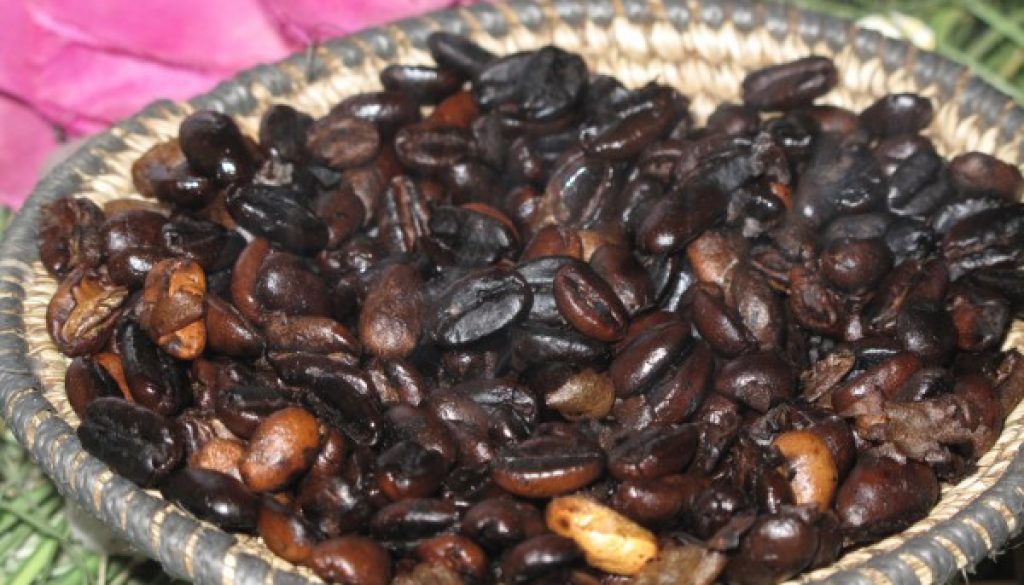Ethiopia shifts coffee fields uphill over climate change
File:
Aside from its cultural value, coffee is Ethiopia’s single largest source of
export revenue, worth more than $860-million (R10.8-billion) in the 2016-2017
production year.
HAMBELA,
Ethiopia – Few countries take coffee as seriously as Ethiopia – and
that’s not only because it prides itself as being the source of the prized
Arabica bean.
But
rising temperatures and worsening drought linked to climate change are now
hitting production – and fixing that may require moving many Ethiopian coffee
fields uphill, experts say.
Aside
from its cultural value, coffee is Ethiopia’s single largest source of export
revenue, worth more than $860-million (R10.8-billion) in the 2016-2017
production year.
But
coffee-growing areas in eastern Ethiopia have seen the average temperature
climb 1.3 degrees Celsius over the past three decades, according to the
Environment, Climate Change and Coffee Forest Forum (ECCCFF), an Ethiopian
non-governmental organisation.
That has
caused stronger drought and – given that coffee is a crop sensitive to
both moisture and temperature – a worsening of diseases that afflict
coffee berries.
As a
result, thousands of hectares of coffee plants are being lost each year in
traditional growing areas, which is raising fears about the future of
Ethiopia’s coffee production.
The
country’s government is now encouraging farmers to grow coffee at higher
elevations – up to 3,200 metres above sea level, about 1,000 metres above
the norm.
That
could help mitigate some of the climate change pressures Ethiopia faces, said
Birhanu Tsegaye, who heads extension services for coffee, tea and spices for
the Ethiopia Coffee and Tea Development Marketing Authority (ECTDMA), a
government body tasked with overseeing the sector.
As
temperatures rise, “even areas not (formerly) suitable for coffee growing
have become suitable, presenting an opportunity for the country to cope with
climate change,” he said.
Pressures
from warming conditions have been noticed in other parts of the country too.
Aman
Adinew, chief executive of Metad Agricultural Development, which manages two
large plantations in Oromia and SNNP regional states, said changing weather
patterns in the country’s south had affected exports.
The
annual harvest, which normally takes place in November and December at his
Hambela and Gedeb coffee farms, was delayed by a month because the beans had
not ripened, he said.
“Since
the coffee beans were still green by the beginning of 2018 due to a shortage of
rain, it led to a delay in coffee processing and export, effectively meaning
breach of contract with our North American, Asian and European customers,”
he said.
Small
farms, big business
Around 90
percent of Ethiopia’s coffee-growers are small-scale farmers, and the industry,
directly and indirectly, employs up to 20 percent of Ethiopia’s 100 million
population, ECTDMA said.
Exports
in the 2016-2017 production year totalled just over 220,000 tonnes, figures
from the trade ministry show.
Coffee
exports have fluctuated over the last five years, making it difficult to
discern any downward trend, Tsegaye told the Thomson Reuters Foundation.
But with
the country adding tens of thousands of coffee hectares in new growing areas
each year, that is offsetting many of the losses in traditional areas, he said.
Tsegaye
said the government also was working to combat the effects of climate change in
traditional coffee growing areas by offering small-scale farmers training on
using shade trees to help hold down temperatures, and on irrigation and better
crop handling after harvest.
He said
the authority was also introducing hardier varieties of coffee, resistant to
diseases and weather extremes.
However,
Tsegaye admitted that current levels of assistance to traditional small-scale
coffee farmers might not be enough to save the industry in those areas, which
is why the coffee marketing authority is looking at growing coffee at higher
altitudes.
Aside from its cultural value, coffee is Ethiopia’s single largest source of
export revenue, worth more than $860-million (R10.8-billion) in the 2016-2017
production year.
Ethiopia – Few countries take coffee as seriously as Ethiopia – and
that’s not only because it prides itself as being the source of the prized
Arabica bean.
rising temperatures and worsening drought linked to climate change are now
hitting production – and fixing that may require moving many Ethiopian coffee
fields uphill, experts say.
from its cultural value, coffee is Ethiopia’s single largest source of export
revenue, worth more than $860-million (R10.8-billion) in the 2016-2017
production year.
coffee-growing areas in eastern Ethiopia have seen the average temperature
climb 1.3 degrees Celsius over the past three decades, according to the
Environment, Climate Change and Coffee Forest Forum (ECCCFF), an Ethiopian
non-governmental organisation.
caused stronger drought and – given that coffee is a crop sensitive to
both moisture and temperature – a worsening of diseases that afflict
coffee berries.
result, thousands of hectares of coffee plants are being lost each year in
traditional growing areas, which is raising fears about the future of
Ethiopia’s coffee production.
country’s government is now encouraging farmers to grow coffee at higher
elevations – up to 3,200 metres above sea level, about 1,000 metres above
the norm.
could help mitigate some of the climate change pressures Ethiopia faces, said
Birhanu Tsegaye, who heads extension services for coffee, tea and spices for
the Ethiopia Coffee and Tea Development Marketing Authority (ECTDMA), a
government body tasked with overseeing the sector.
temperatures rise, “even areas not (formerly) suitable for coffee growing
have become suitable, presenting an opportunity for the country to cope with
climate change,” he said.
from warming conditions have been noticed in other parts of the country too.
Adinew, chief executive of Metad Agricultural Development, which manages two
large plantations in Oromia and SNNP regional states, said changing weather
patterns in the country’s south had affected exports.
annual harvest, which normally takes place in November and December at his
Hambela and Gedeb coffee farms, was delayed by a month because the beans had
not ripened, he said.
the coffee beans were still green by the beginning of 2018 due to a shortage of
rain, it led to a delay in coffee processing and export, effectively meaning
breach of contract with our North American, Asian and European customers,”
he said.
farms, big business
percent of Ethiopia’s coffee-growers are small-scale farmers, and the industry,
directly and indirectly, employs up to 20 percent of Ethiopia’s 100 million
population, ECTDMA said.
in the 2016-2017 production year totalled just over 220,000 tonnes, figures
from the trade ministry show.
exports have fluctuated over the last five years, making it difficult to
discern any downward trend, Tsegaye told the Thomson Reuters Foundation.
the country adding tens of thousands of coffee hectares in new growing areas
each year, that is offsetting many of the losses in traditional areas, he said.
said the government also was working to combat the effects of climate change in
traditional coffee growing areas by offering small-scale farmers training on
using shade trees to help hold down temperatures, and on irrigation and better
crop handling after harvest.
the authority was also introducing hardier varieties of coffee, resistant to
diseases and weather extremes.
Tsegaye admitted that current levels of assistance to traditional small-scale
coffee farmers might not be enough to save the industry in those areas, which
is why the coffee marketing authority is looking at growing coffee at higher
altitudes.




